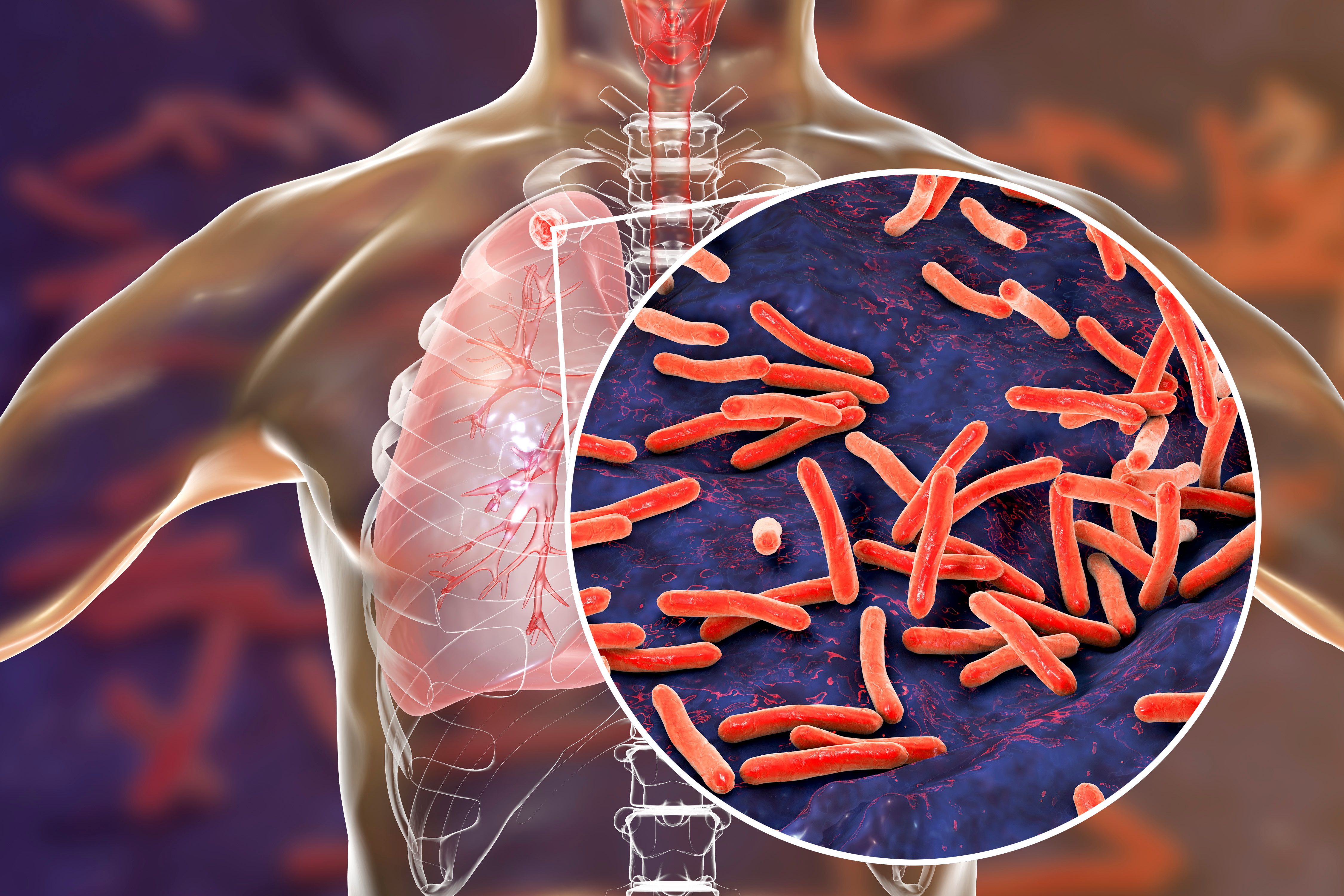TD-GC×GC–TOF-MS Non-Invasively Identifies VOCs in Skin as Tuberculosis Biomarkers
A polydimethylsiloxane (PDMS) silicone rubber band sampler was used to collect volatile organic compounds (VOCs) from the skin of both tuberculosis (TB)-positive and TB-negative subjects.
A platform combining thermal desorption with comprehensive two-dimensional gas chromatography and time-of-flight mass spectrometry (TD-GC×GC–TOF-MS) has been devised by researchers at the University of Pretoria in South Africa for determining volatile organic compounds (VOCs) in human skin and assessing their potential as biomarkers for diagnosing tuberculosis (TB) (1). The work of these authors, Portia C. K. Makhubela, Egmont R. Rohwer, and Yvette Naudé, was recently published in the Journal of Chromatography B.
Secondary tuberculosis in lungs and close-up view of Mycobacterium tuberculosis bacteria, 3D illustration | Image Credit: © Dr_Microbe - stock.adobe.com

According to the authors, TB remains a global health concern. Infection from this contagious, airborne bacterium most often results in pulmonary TB affecting the lungs (1). Blood and sputum are the most common means of detection by diagnostic tests, but producing adequate sputum, the authors said, can be difficult given a dry cough is often a TB symptom. This study proposes the use of a polydimethylsiloxane (PDMS) silicone rubber band, made in-house, as a non-invasive sampler for collecting VOCs from skin, from a mix of male and female participants—15 clinically diagnosed with TB, and 23 TB-negative.
Building on previous studies that had revealed compounds reported for TB from biofluids, the authors said their method identified 27 of those compounds in the skin samples, plus another 16 potential biomarkers that were previously unreported (1). An artificial neural network (ANN) multilayered perceptron, according to the research, identified 1H-indene, 2,3 dihydro-1,1,3-trimethyl-3-phenyl and heptane-3-ethyl-2-methyl as the two most discriminatory compounds overall, and 3-methylhexane as the most discriminatory between those who were TB-positive and TB-negative in the study.
In evaluating their hypothesis, the authors said the combination of a non-invasive skin test combined with the TD-GC×GC–TOF-MS platform performed favorably to other diagnostic methods including electronic nose and breath analysis, demonstrating that skin VOCs can distinguish between individuals with tuberculosis and without (1). For further investigation, the researchers recommended expanding the study cohort from the 38 people involved in this report, as well as confirming the identity of biomarkers with advanced techniques such as high-resolution mass spectrometry (HRMS).
Reference
(1) Makhubela, P. C. K.; Rohwer, E. R.; Naudé, Y. Detection of Tuberculosis-Associated Compounds from Human Skin by GC×GC–TOF-MS. J. Chromatogr. B 2023, 1231, 123937. DOI: 10.1016/j.jchromb.2023.123937
Study Examines Impact of Zwitterionic Liquid Structures on Volatile Carboxylic Acid Separation in GC
March 28th 2025Iowa State University researchers evaluated imidazolium-based ZILs with sulfonate and triflimide anions to understand the influence of ZILs’ chemical structures on polar analyte separation.
Study Explores Thin-Film Extraction of Biogenic Amines via HPLC-MS/MS
March 27th 2025Scientists from Tabriz University and the University of Tabriz explored cellulose acetate-UiO-66-COOH as an affordable coating sorbent for thin film extraction of biogenic amines from cheese and alcohol-free beverages using HPLC-MS/MS.
Quantifying Microplastics in Meconium Samples Using Pyrolysis–GC-MS
March 26th 2025Using pyrolysis-gas chromatography and mass spectrometry, scientists from Fudan University and the Putuo District Center for Disease Control and Prevention detected and quantified microplastics in newborn stool samples.







